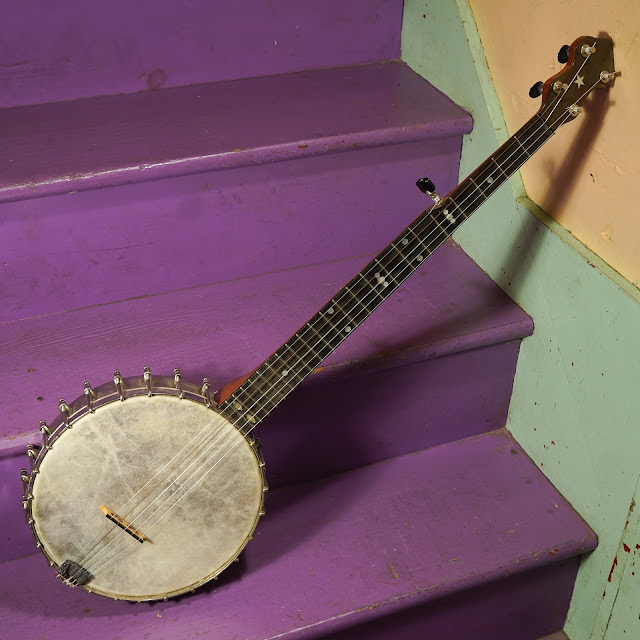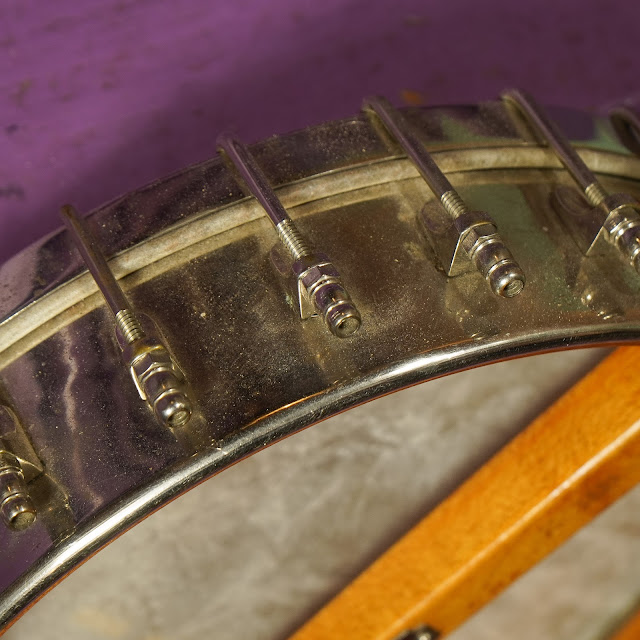1890s A.C. Fairbanks No. 2 Special 5-String Openback Banjo
I worked on this banjo back in 2016 but its owner is clearing-house these days and brought it back in for sale. He has a truly remarkable banjo collection so I get it!
It's a rather no-frills, Boston-made, Fairbanks model with a spunover rim design (with a simple integral "hoop" tonering on the top of the rim), smaller rim, and shorter scale than your average "professional" Fairbanks instruments from the time. With a scale a little over 25" I wouldn't call this a generic "A-scale" banjo like the old 24" Buckbee models, but it's getting there.
It was still setup nicely from the last time I worked on it but we did swap out the strings and give it a few minor adjustments when it came back in. The neck on this guy is straight up until about the 10th fret and then it starts going into a minor backbow which means the action gets slightly higher vs. normal from 12 on up. Still, it's at the normal "classic banjo" height of 3/32" at the 12th fret which is what I set them up standard for with nylon/gut/Nylgut strings.
Speaking of strings -- yes, this one was made in the time when banjos were mostly strung with gut, so stick to nylon or Nylgut strings with it or you will find the neck misbehaving. It's currently wearing Aquila Nylgut with their "brown" plain string for the lower D.
Repairs included: a fret level/dress, new head, new bridge and tailpiece, cleaning, and setup work.
Weight: 4 lbs 4 oz
Scale length: 25 1/8"
Nut width: 1 3/16"
Neck shape: medium V
Board radius: flat
Head diameter: 10"
Depth overall at rim: 2 1/2"
Rim wood: maple?
Tonering: integral "hoop"
Bridge: ebony/maple
Fretboard: ebonized maple
Neck wood: cherry?
Action height at 12th fret: 3/32” overall (quick)
String gauges: Aquila Nylgut with brown low string
Neck relief: straight until 10th, slight backbow after
Fret style: lower/smaller
Condition notes: it's mostly-original but does have a replacement skin head, new tailpiece, new bridge, later friction pegs, some replacement inlay in the fretboard, and general wear throughout the fretboard, neck, and rim. It looks nice, though -- it's not been abused.
It comes with: a not-quite-fitting but good hard case. I will foam it up so the banjo fits better for use.
Consignor tag: B17




















Comments